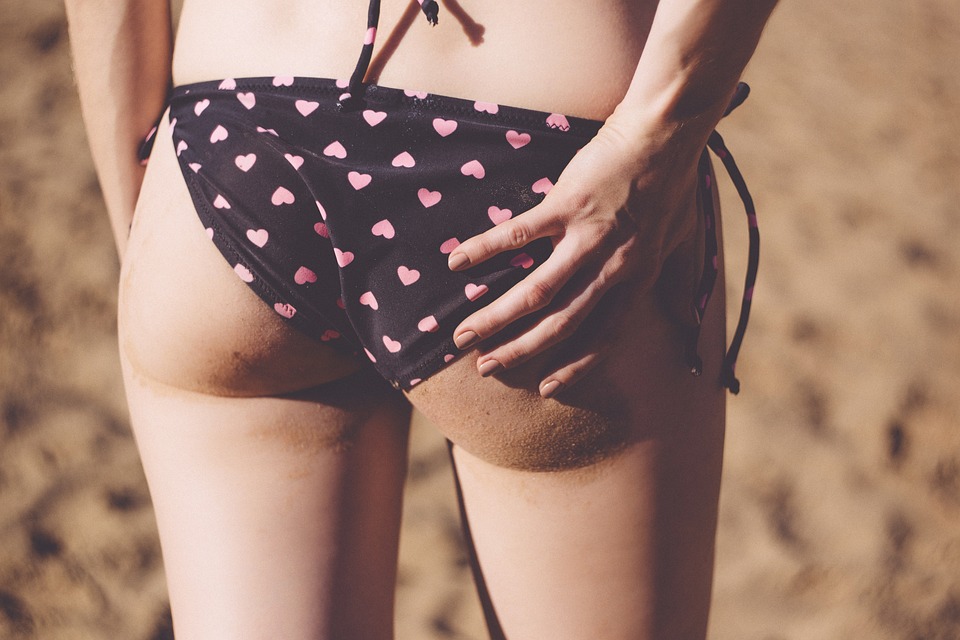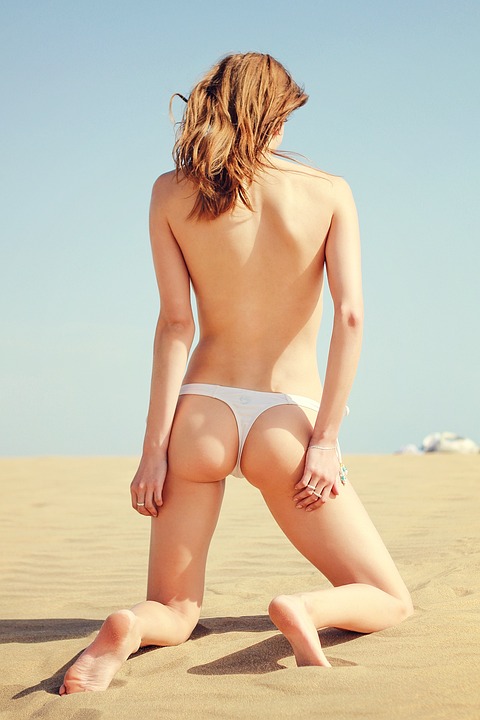Understanding Bikini Line Yeast Rash: Causes, Symptoms, and Treatment
Introduction:
A Bikini Line yeast rash can be a bothersome and uncomfortable condition that affects many women. It occurs when the delicate skin in the Bikini area becomes irritated and infected by an overgrowth of yeast. In this article, we will delve into the underlying causes, common symptoms, effective treatments, preventive measures, and self-care tips to manage and prevent Bikini Line yeast rash.
Causes of Bikini Line Yeast Rash
Bikini Line yeast rash is primarily caused by an overgrowth of the fungus Candida albicans. This fungus is normally present in small amounts in the body, including the genital area. However, certain factors can disrupt the natural balance of microorganisms, leading to an overgrowth of yeast and the subsequent development of a rash. Some common causes include:
1. Moisture and Warmth: The Bikini area provides an ideal environment for yeast to thrive due to its warmth and moisture. Wearing tight-fitting clothing, particularly non-breathable synthetic materials, can trap moisture and create a breeding ground for yeast.
2. Hormonal Changes: Hormonal fluctuations during the menstrual cycle, pregnancy, or menopause can disrupt the natural balance of microorganisms, making women more susceptible to yeast infections.
3. Antibiotics and Medications: The use of antibiotics or certain medications, such as corticosteroids, can disturb the balance of the vaginal flora, allowing yeast to multiply.
4. Poor Hygiene Practices: Insufficient personal hygiene, including infrequent changing of underwear, not washing the Bikini area properly, or using harsh soaps and douches, can contribute to the development of a yeast rash.
Symptoms of Bikini Line Yeast Rash
Identifying the symptoms of a Bikini Line yeast rash is crucial for prompt diagnosis and treatment. The most common symptoms include:
1. Itching and Irritation: One of the hallmark symptoms of a yeast infection is intense itching and irritation in the Bikini area. This itching can be persistent and may worsen in warm or moist environments.
2. Redness and Inflammation: The affected area may appear red, inflamed, and swollen. The skin may feel tender to the touch and can sometimes develop small red bumps or pustules.
3. Discharge: Some women may experience a thick, white, and odorless discharge that resembles cottage cheese. This discharge is a result of the overgrowth of yeast in the vagina.
4. Burning Sensation: A yeast rash can cause a burning or stinging sensation, especially during urination or sexual intercourse.
5. Rash Spreading: If left untreated, the rash may spread to the surrounding areas, including the inner thighs and buttocks.
Treatment of Bikini Line Yeast Rash
Treating a Bikini Line yeast rash involves a combination of self-care measures and medical interventions. Here are some effective treatment options:
1. Over-the-Counter Antifungal Creams: Topical antifungal creams, such as clotrimazole or miconazole, can be applied to the affected area to eliminate the yeast infection. Follow the instructions on the package and continue using the cream for the recommended duration, even if symptoms improve.
2. Prescription Medications: In severe or recurrent cases, your healthcare provider may prescribe an oral antifungal medication, such as fluconazole, to combat the yeast overgrowth.
3. Good Hygiene Practices: Maintaining proper hygiene is essential for managing and preventing Bikini Line yeast rash. Clean the area with mild soap and water, and pat it dry thoroughly. Avoid using harsh soaps, douches, or scented products that can disrupt the natural balance of microorganisms.
4. Loose-Fitting Clothing: Opt for loose-fitting, breathable cotton underwear and avoid tight-fitting synthetic materials, which can trap moisture and promote yeast growth.
5. Natural Remedies: Some women find relief by using natural remedies, such as applying diluted tea tree oil or yogurt to the affected area. However, it’s important to consult with a healthcare professional before using any alternative treatments.
Preventing Bikini Line Yeast Rash
Prevention is always better than cure when it comes to Bikini Line yeast rash. Here are some preventive measures to keep the infection at bay:
1. Maintain Proper Hygiene: Regularly clean the Bikini area with mild soap and water, ensuring it is thoroughly dried afterward. Avoid using harsh soaps, douches, or scented products.
2. Wear Breathable Fabrics: Choose underwear made from breathable fabrics like cotton to allow air circulation and reduce moisture buildup.
3. Change Wet Clothes Promptly: After swimming or exercising, change out of wet clothes promptly to prevent moisture from lingering in the Bikini area.
4. Avoid Tight Clothing: Opt for loose-fitting clothing, especially in the Bikini area, to minimize friction and promote airflow.
5. Limit Antibiotic Use: Use antibiotics only when necessary, and always follow the prescribed course. If you are prone to yeast infections, discuss alternative medications with your healthcare provider.
Conclusion:
Bikini Line yeast rash can be an uncomfortable and frustrating condition, but with the right knowledge and preventive measures, it can be effectively managed and prevented. By understanding the causes, recognizing the symptoms, and adopting good hygiene practices, women can minimize the risk of developing a Bikini Line yeast rash and maintain optimal vaginal health. If symptoms persist or worsen, it is important to consult a healthcare professional for proper diagnosis and treatment.
Top Questions About Bikini Line Yeast Rash
What is a Bikini Line yeast rash?
A Bikini Line yeast rash is a type of skin condition that occurs in the area where the Bikini Line meets the pubic region. It is caused by an overgrowth of yeast, specifically Candida, which is a type of fungus. This condition can cause discomfort, itching, and redness in the affected area.
Key information:
1. A Bikini Line yeast rash is caused by an overgrowth of Candida, a type of fungus.
2. It is characterized by discomfort, itching, and redness in the Bikini Line area.
3. Proper hygiene and avoiding certain triggers can help prevent and manage the condition.
What are the symptoms of a Bikini Line yeast rash?
The symptoms of a Bikini Line yeast rash can vary from person to person, but commonly include itching, redness, and a raised rash in the Bikini Line area. In some cases, there may also be a burning sensation or pain. It is important to note that these symptoms can also be indicative of other conditions, so a proper diagnosis is essential.
Key information:
1. Symptoms of a Bikini Line yeast rash include itching, redness, and a raised rash.
2. Some individuals may also experience a burning sensation or pain.
3. It is important to consult a healthcare professional for an accurate diagnosis.
What causes a Bikini Line yeast rash?
A Bikini Line yeast rash is typically caused by an overgrowth of Candida, which can be triggered by various factors. These include poor hygiene, excessive moisture in the Bikini area, wearing tight or non-breathable clothing, using scented products, and taking certain medications such as antibiotics or steroids. Hormonal changes and a weakened immune system can also contribute to the development of a yeast rash.
Key information:
1. A Bikini Line yeast rash is usually caused by an overgrowth of Candida.
2. Poor hygiene, excessive moisture, tight clothing, scented products, and certain medications can trigger the condition.
3. Hormonal changes and a weakened immune system can also play a role in the development of a yeast rash.
How can a Bikini Line yeast rash be treated?
Treating a Bikini Line yeast rash typically involves a combination of self-care measures and medication. Keeping the affected area clean and dry is important to prevent further irritation. Over-the-counter antifungal creams or ointments can be applied directly to the rash to help eliminate the yeast. In more severe cases, a healthcare professional may prescribe stronger antifungal medications or recommend oral medications. It is vital to follow the recommended treatment plan and complete the full course of medication to ensure complete resolution of the rash.
Key information:
1. Treatment for a Bikini Line yeast rash involves self-care measures and medication.
2. Keeping the affected area clean and dry is important to prevent further irritation.
3. Over-the-counter antifungal creams or prescribed medications may be used to eliminate the yeast.
Can a Bikini Line yeast rash be prevented?
While it may not always be possible to prevent a Bikini Line yeast rash, there are several steps that can be taken to reduce the risk of developing one. Maintaining good hygiene practices, such as regular washing and drying of the Bikini area, can help prevent the overgrowth of yeast. Wearing loose-fitting, breathable clothing and avoiding scented products can also be beneficial. It is important to avoid excessive moisture in the Bikini area and to promptly treat any infections or conditions that may weaken the immune system.
Key information:
1. Good hygiene practices can help prevent a Bikini Line yeast rash.
2. Wearing loose-fitting, breathable clothing and avoiding scented products is beneficial.
3. Promptly addressing any infections or conditions that weaken the immune system can also reduce the risk of developing a yeast rash.
1. Bikini Line Yeast Rash is caused by poor hygiene
Contrary to popular belief, a yeast rash in the Bikini Line area is not necessarily linked to poor hygiene. While maintaining good hygiene is essential for overall health, a yeast rash can occur even in individuals who practice meticulous cleanliness. The development of a yeast rash is primarily influenced by a combination of factors, including hormonal changes, weakened immune system, excessive moisture, and the presence of yeast-like fungus on the skin.
2. Only women can get Bikini Line Yeast Rash
Another common misconception is that only women can experience a yeast rash in the Bikini Line area. However, this is far from the truth. Both men and women can develop a yeast rash in the Bikini Line region. Although the condition is more commonly associated with women due to the presence of a warm and moist environment caused by tight clothing, the use of sanitary pads, and hormonal fluctuations, men can also experience this uncomfortable and itchy rash.
3. Bikini Line Yeast Rash is a sexually transmitted infection
It is important to note that a yeast rash in the Bikini Line area is not a sexually transmitted infection (STI). Yeast rashes are caused by an overgrowth of Candida, a type of fungus that naturally resides on the skin. This overgrowth is often triggered by factors such as excessive moisture, poor immune function, or the use of certain medications. While sexual activity can sometimes contribute to the development of a yeast rash, it is not considered an STI in itself.
4. Bikini Line Yeast Rash is always itchy
Although itching is a common symptom associated with a yeast rash in the Bikini Line area, it is not always present. Each individual may experience different symptoms, and itching may vary in intensity depending on factors such as the severity of the infection, skin sensitivity, and personal discomfort tolerance. Some individuals may only experience mild irritation or redness without significant itching, while others may have intense itching accompanied by a burning sensation.
5. Over-the-counter creams can cure Bikini Line Yeast Rash
While over-the-counter (OTC) creams and ointments can provide temporary relief from the symptoms of a yeast rash in the Bikini Line area, they may not fully cure the underlying infection. OTC antifungal medications typically contain active ingredients such as clotrimazole or miconazole, which can help to alleviate itching and reduce the growth of yeast temporarily. However, if the rash persists or worsens despite using OTC treatments, it is advisable to consult a healthcare professional for a proper diagnosis and appropriate treatment plan. In some cases, prescription-strength antifungal medications may be necessary to effectively treat the infection.
These misconceptions surrounding Bikini Line yeast rashes highlight the importance of understanding the condition accurately. By dispelling these myths, individuals can better comprehend the causes, symptoms, and treatments associated with this common skin issue. It is always recommended to seek medical advice when dealing with persistent or severe symptoms to ensure proper diagnosis and appropriate management of the condition.


